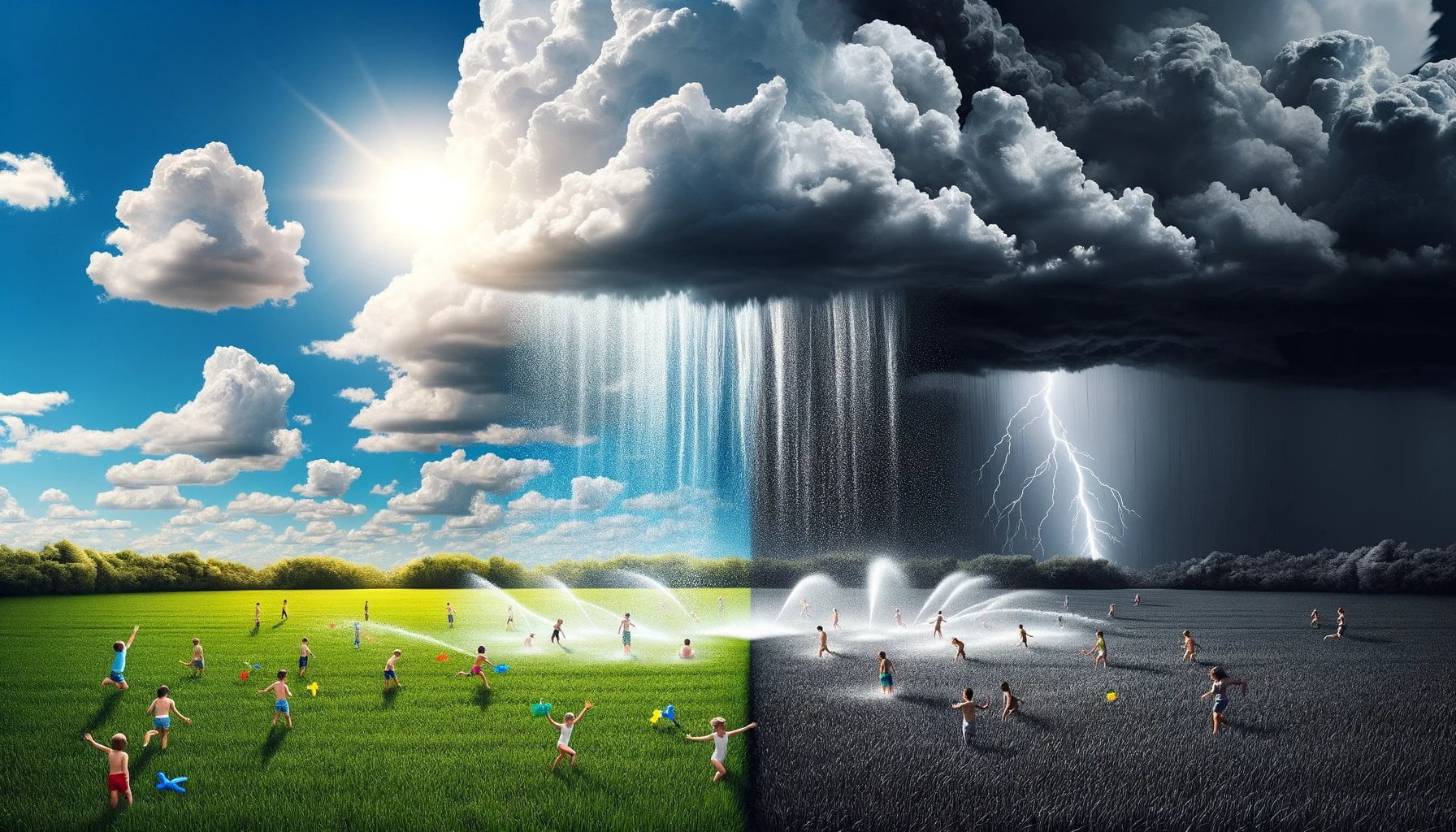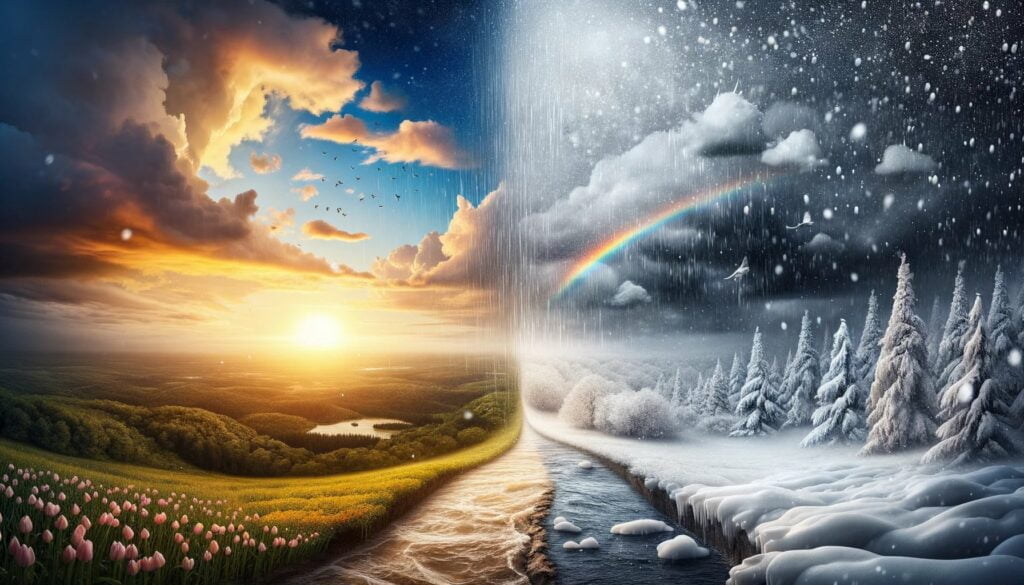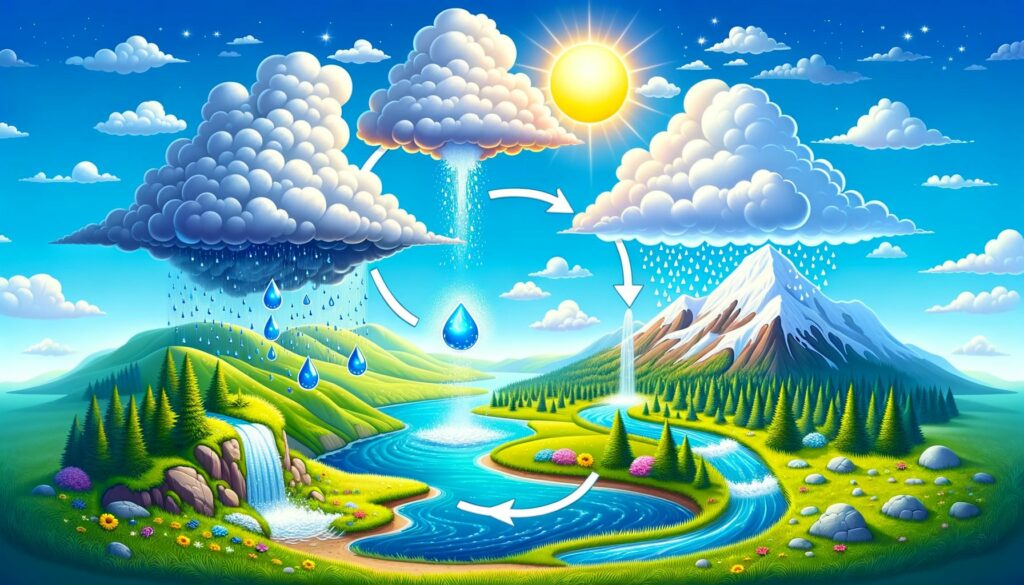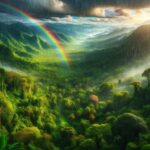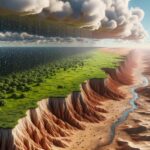Welcome to an exciting journey into the world of precipitation! Have you ever wondered why rain falls from the sky? Or how snowflakes form during winter? In this article, we’re going to explore the fascinating phenomenon of precipitation and break it down into simple terms that even the youngest minds can understand. Get ready to discover the magic behind rain, snow, sleet, and hail, as we dive into the science behind these incredible natural occurrences. So grab your raincoat and let’s begin our adventure into the world of precipitation!
What is Precipitation?
Precipitation is a fascinating natural phenomenon that begins in the clouds and ends with water falling to the ground. It can take different forms such as rain, snow, sleet, or hail, and it plays a vital role in the Earth’s water cycle.
How Does Precipitation Form?
To understand how precipitation forms, we first need to know about water vapor. Water vapor is invisible water in the air, like tiny water particles. When the air becomes saturated with water vapor, it can no longer hold it all. That’s when condensation happens. Think of it like a bursting sponge that can no longer absorb any more water. The excess water vapor forms tiny droplets or ice crystals and becomes visible as clouds.
As those droplets or ice crystals bump into one another and merge, they become heavier. Eventually, they become too heavy to stay in the cloud, and they start falling towards the ground. That’s when we observe precipitation.
Types of Precipitation:
There are various types of precipitation. The most common one is rain, which is liquid water falling from the sky. When the temperature is very low, like during winter, the droplets freeze and snowflakes form. If the temperature is slightly above freezing, the raindrops may partially freeze, resulting in sleet. And when the conditions in the cloud are just right, tiny ice pellets combine to form hailstones, which can be quite large.
The Water Cycle and Precipitation:
Precipitation is a significant part of the water cycle. The water cycle describes the continuous movement of water on Earth as it changes form and location. It involves three main steps: evaporation, condensation, and precipitation.
During evaporation, water from oceans, lakes, rivers, or even plants turns into water vapor due to heat from the sun. This vapor rises into the atmosphere, where it cools down and condenses to form clouds. Finally, when the water droplets or ice crystals in the clouds become too heavy, precipitation occurs, completing the water cycle.
Why is Precipitation Important?
Precipitation is essential for our planet. It provides the freshwater we need to drink, water our plants, and fill our lakes and rivers. It also helps to replenish groundwater, which is the water stored in spaces underground. Precipitation nourishes plants and contributes to the growth of crops, sustaining both wildlife and agriculture.
However, it’s important to mention that sometimes the water droplets in the clouds can become contaminated with pollutants in the atmosphere, leading to acid rain. Acid rain can harm plants and animals and even damage buildings and statues. That’s why it’s crucial to take care of our environment and reduce pollution.
In Summary:
Precipitation is the result of water vapor in the atmosphere cooling and condensing into droplets or ice crystals, which then fall from the clouds to the ground. It comes in various forms, such as rain, snow, sleet, or hail. Precipitation is a vital part of the water cycle, ensuring the continual movement and availability of freshwater on Earth. So, the next time you see rain or snow falling from the sky, remember the journey it has taken from vapor to precipitation.
The water cycle is a fascinating process that continuously circulates water throughout our planet. One crucial aspect of this cycle is precipitation. Precipitation occurs when the water vapor in the atmosphere condenses into liquid or solid form and falls back to the Earth’s surface. It can manifest as rain, snow, sleet, or hail, and plays a vital role in maintaining the Earth’s ecosystems. To learn more about the intricate relationship between precipitation and the water cycle, click here: precipitation water cycle. Dive into the wonders of this natural phenomenon and uncover its impact on our planet.
How does precipitation form?
Introduction:
Have you ever wondered how rain, snow, and hail are formed? Well, they are all part of a process called precipitation. Precipitation is the water that falls from the clouds to the ground in different forms, such as rain, snow, sleet, or hail. But how does precipitation form? Let’s discover the fascinating journey of water in the atmosphere and explore the formation of various types of precipitation.
The Water Cycle:
To understand how precipitation forms, we first need to talk about the water cycle. The water cycle is a continuous process that involves the movement and transformation of water on Earth. There are three main stages in the water cycle: evaporation, condensation, and precipitation.
Evaporation:
Evaporation is the process where the sun’s heat causes water on the Earth’s surface to turn into water vapor. This water vapor rises into the air and forms invisible gas.
Imagine a pot of boiling water on a stove. The rising steam is like the water vapor evaporating into the air.
Condensation:
As the water vapor rises higher into the atmosphere, it cools down. When the temperature drops, the water vapor starts condensing back into water droplets. These tiny droplets join together to form clouds.
Think of it as tiny droplets of water getting together to have a cloud party in the sky.
[How does precipitation form?]
Precipitation:
Now, let’s talk about the main event – precipitation! Precipitation occurs when the water droplets in the cloud continue to grow bigger and bigger. When they become too heavy, they fall from the clouds to the ground in different forms depending on the temperature conditions.
Imagine a crowded cloud where all the water droplets are huddled up, waiting for their turn to fall down.
Different Types of Precipitation:
There are four main types of precipitation: rain, snow, sleet, and hail. Each type forms under specific temperature conditions.
– Rain:
Rain is formed when the temperature is above freezing point. Water droplets in the cloud collide and merge, forming larger droplets that fall as rain.
– Snow:
Snow forms when the temperature is below freezing point. The water droplets in the cloud freeze into ice crystals and become snowflakes. These snowflakes then fall to the ground and create a beautiful white blanket.
– Sleet:
Sleet is a mixture of rain and snow. It occurs when the temperature is freezing, but there is a warm layer in the atmosphere. The snowflakes partially melt into raindrops, but before reaching the ground, they refreeze into ice pellets called sleet.
– Hail:
Hail is formed when there are strong updrafts in thunderclouds. These powerful updrafts carry water droplets high into the cloud, where they freeze and grow into large hailstones. Eventually, the hailstones become too heavy for the updrafts to support, and they fall to the ground.
Conclusion:
Now you know how precipitation forms! It all starts with water evaporating into the air, then condensing into clouds, and finally, the water droplets falling back to the ground as rain, snow, sleet, or hail. Precipitation is a significant part of the water cycle, as it provides freshwater for drinking, watering plants, filling lakes and rivers, and replenishing groundwater. So, the next time you see raindrops falling from the sky or snowflakes gently landing on the ground, you’ll understand the magical journey of water in the atmosphere!
The Importance of Precipitation
Precipitation is not just water falling from the sky; it plays a crucial role in our planet’s ecosystem. In this article, we will explore the importance of precipitation, how it affects various aspects of our environment, and why it is essential for the well-being of all living beings.
1. Water Distribution and the Water Cycle
Precipitation is a fundamental part of the water cycle, which is responsible for distributing water throughout the Earth. The water cycle consists of three main stages: evaporation, condensation, and precipitation. When the sun’s heat causes water on the Earth’s surface to turn into water vapor (evaporation), it rises into the atmosphere and cools down, forming clouds (condensation). Eventually, these water droplets become too heavy and fall back to the ground as precipitation.
Precipitation replenishes our freshwater sources such as lakes, rivers, and underground aquifers. It is an essential source of water for drinking, watering plants, and supporting the needs of wildlife. Without precipitation, these water sources would eventually dry up, resulting in a scarcity of freshwater for both humans and animals.
2. Weather and Climate Influence
Precipitation plays a significant role in influencing our weather patterns and overall climate. By redistributing Earth’s energy, precipitation helps regulate temperature and balance the Earth’s heat. This process cools down the atmosphere, ultimately affecting weather conditions such as wind strength and cloud formation. Precipitation also contributes to the formation of storms and hurricanes, which are essential for maintaining a healthy environment.
3. Environmental Systems
Precipitation is a vital component in various environmental systems. It helps remove or dissolve particles in the atmosphere, improving air quality. Rain, for example, washes away pollutants and contaminants from the air, making it cleaner and healthier to breathe.
Additionally, precipitation plays a critical role in erosion. It carries sediments from land into the ocean, rivers, and lakes. This erosion process shapes the Earth’s surface and contributes to the formation of landscapes, canyons, and valleys. It also helps nutrients reach aquatic ecosystems, supporting the growth of plants and the survival of aquatic organisms.
4. Plant and Animal Life
Precipitation is essential for the survival and growth of plants and animals. Rainfall provides hydration to plants, allowing them to absorb necessary nutrients from the soil. It helps plants produce food through photosynthesis and aids in the process of seed germination. Without precipitation, plants would wither and die, disrupting the entire food chain.
Animals also depend on precipitation for their survival. Precipitation fills up water sources, such as ponds and lakes, ensuring that animals have access to drinking water. It also contributes to the growth of vegetation, which is a crucial food source for many animals. Without precipitation, the delicate balance of ecosystems would be disturbed, affecting the biodiversity of our planet.
Conclusion
In conclusion, precipitation is far more than just water falling from the sky. It plays a vital role in various aspects of our environment, from distributing water and regulating weather conditions to supporting plant and animal life. The importance of precipitation cannot be overstated. It is our responsibility to understand, appreciate, and protect this natural phenomenon to ensure the well-being of our planet and future generations.
FAQ
Question 1
What is precipitation?
Answer 1
Precipitation is any form of water that falls from clouds to the ground. It can be in the form of liquid, such as rain or drizzle, or solid, like snow or hail.
Question 2
How is precipitation formed?
Answer 2
Precipitation is formed when water vapor in the atmosphere cools down and condenses into droplets or crystals. This occurs when warm air pushes water vapor high into the atmosphere, and as the vapor cools, it condenses into water droplets that can stay liquid or freeze into hail or snowflakes. Eventually, if enough condensation collects to saturate the air, it falls back to earth as precipitation.
Question 3
What are the different types of precipitation?
Answer 3
A variety of water particles fall from clouds as precipitation. This includes drizzle, rain, snow, snow pellets, ice crystals, and hail. Rainfall and drizzle are the only types of precipitation that deliver water in liquid form.
Question 4
Why is precipitation important?
Answer 4
Precipitation is a crucial part of the global water cycle, along with evaporation and condensation. It provides water to lakes, rivers, and underground aquifers, which are essential for sustaining life on Earth. Precipitation also influences the frequency and size of fires and affects air quality by removing or dissolving particles in the atmosphere.
Question 5
How does precipitation affect the environment?
Answer 5
Precipitation redistributes Earth’s energy and influences the planet’s weather, climate, and environmental systems. It erodes sediments from land into the ocean, rivers, and lakes. Additionally, precipitation provides drinks to plants and animals, ensuring their survival.
- Senior at What Age: Benefits & Eligibility Guide - March 29, 2025
- Unlocking Senior Benefits: How Old is a Senior? Your Complete Guide - March 29, 2025
- Master Russian Politeness:A Guide to Saying Please - March 29, 2025
